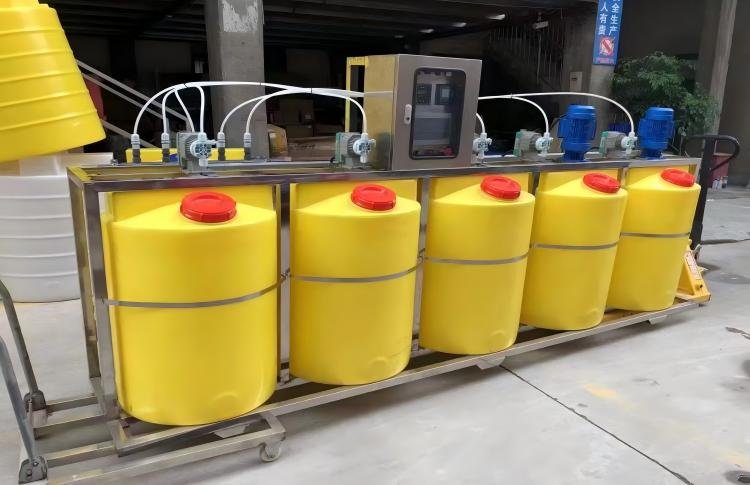Reverse osmosis (RO) is a widely used water treatment method that removes impurities from water by using a semi-permeable membrane. To ensure the system’s efficiency and prolong its lifespan, chemical dosing is crucial. In this blog, we will introduce the reverse osmosis chemical dosing system and explore common dosing plans.
What is a Reverse Osmosis Chemical Dosing System?
A Reverse Osmosis Chemical Dosing System is designed to add chemicals into the water before or during the filtration process. The chemicals are used to help prevent fouling, scaling, and microbial growth in the RO membranes. The most common chemicals used include antiscalants, acid, alkali, disinfectants, and biocides.
- Antiscalants: These chemicals help prevent scale buildup on the membranes. Without them, minerals like calcium carbonate could form solid deposits that block the pores of the membrane.
- Acid and Alkali: These are used to adjust the pH of the feed water to optimize the RO process.
- Disinfectants: These chemicals kill bacteria, viruses, and other pathogens that might affect the system’s performance.
- Biocides: These are chemicals used to control the growth of biofilms on the membranes.
Why is Chemical Dosing Important?
RO membranes are sensitive to fouling and scaling. When fouling occurs, the efficiency of the system decreases. Scaling leads to a decrease in water production, and microbial growth can cause membrane damage. By using the right chemicals, you can ensure the longevity and optimal performance of the reverse osmosis system.
In addition, chemicals are used to manage water chemistry, which helps in achieving the desired water quality standards.
Key Components of an RO Chemical Dosing System
An RO chemical dosing system generally consists of the following components:
- Chemical Storage Tanks: These tanks hold the chemicals needed for dosing.
- Dosing Pumps: These pumps are responsible for injecting chemicals into the feed water or the RO system.
- Mixing Units: These units ensure that the chemicals are properly mixed with the feed water before entering the RO system.
- Flow Meters: Flow meters measure the quantity of chemicals being injected into the system.
- Control Panel: This panel monitors the entire system and controls the dosing rate and chemical injection.
Common Chemical Dosing Plans
A chemical dosing plan depends on the quality of the feed water and the specific requirements of the RO system. Here are a few common dosing plans:
1. Antiscalant Dosing Plan
The dosing of antiscalant is critical to prevent mineral scaling on the membranes. This chemical is typically dosed in very small quantities but continuously, depending on the feed water quality.
| Parameter | Value Range |
|---|---|
| Feed Water Hardness | 100-500 mg/L |
| Antiscalant Dose | 2-4 mg/L |
| pH Range | 6.5 – 7.5 |
2. Acid and Alkali Dosing Plan
Acid dosing is used to reduce the pH of feed water, while alkali dosing raises the pH. Maintaining a pH range of 6.5 to 7.5 is typically optimal for RO performance.
| Parameter | Acid Dose | Alkali Dose |
|---|---|---|
| pH of Feed Water | < 7.5 | > 7.5 |
| Typical Dose | 0.5-2.0 mg/L | 0.5-2.0 mg/L |
| Frequency of Dosing | Continuous | Continuous |
3. Biocide Dosing Plan
Biocides are typically used intermittently to prevent microbial growth. The dosing frequency depends on the microbial count in the feed water.
| Parameter | Value Range |
|---|---|
| Microbial Count | 100 CFU/mL |
| Biocide Dose | 0.5-1.0 mg/L |
| Frequency | Weekly/Monthly |
Factors Affecting Chemical Dosing
There are several factors that affect the chemical dosing plan:
- Water Quality: The quality of feed water directly influences the type and amount of chemicals needed. High hardness or high fouling potential will require higher doses of antiscalants or acids.
- RO System Design: The design and capacity of the RO system determine how much chemical is required for optimal performance.
- Membrane Type: Different membranes may have different chemical requirements. Some membranes are more resistant to fouling and scaling than others, requiring fewer chemicals.
- Temperature: Temperature affects the solubility and reaction rates of chemicals, so adjustments may be necessary in warmer or cooler climates.
Monitoring and Adjusting the Dosing System
To ensure that the chemical dosing system is working effectively, it is important to regularly monitor the system. Parameters such as pressure, flow rates, pH, and chemical concentrations should be checked. Additionally, regular cleaning and maintenance of the dosing pumps and mixing units are necessary to prevent clogging or malfunctions.
Conclusion
An effective reverse osmosis chemical dosing system is essential to maintain the performance and extend the lifespan of the RO membranes. By using the right chemicals in the correct amounts, you can prevent scaling, fouling, and microbial growth. It’s important to choose the right dosing plan based on feed water quality and system requirements. Regular monitoring and adjustment will ensure the RO system operates at peak efficiency.
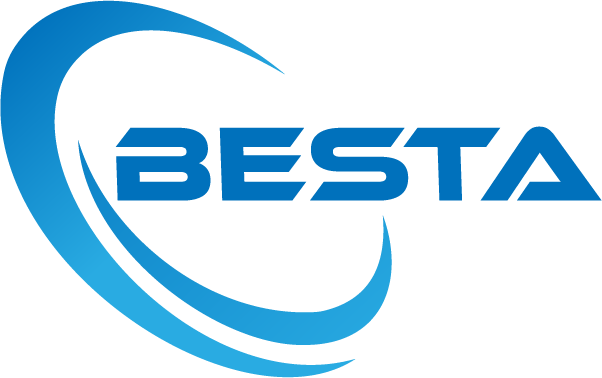
 MBR Membrane
MBR Membrane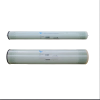 Reverse Osmosis Membrane
Reverse Osmosis Membrane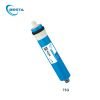 Residential Ro Membrane
Residential Ro Membrane UF Membrane
UF Membrane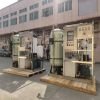 Water Treatment Plant
Water Treatment Plant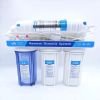 Residential Ro Machine
Residential Ro Machine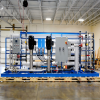 Brackish Ro System
Brackish Ro System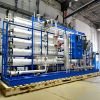 Sea water system/SW RO plant
Sea water system/SW RO plant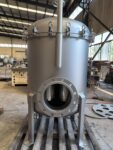 Bag Filter
Bag Filter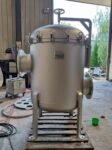 Cartridge Filter
Cartridge Filter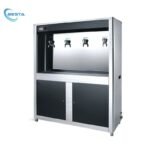 Commercial Water Filtration System
Commercial Water Filtration System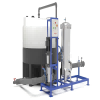 Membrane Cleaning System(CIP)
Membrane Cleaning System(CIP)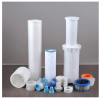 Consumables Accessories
Consumables Accessories